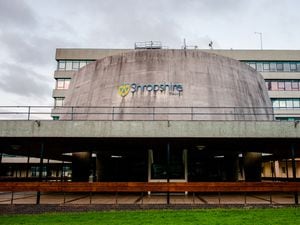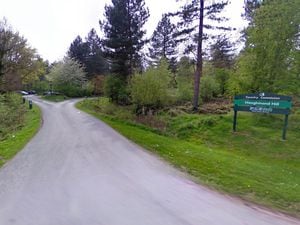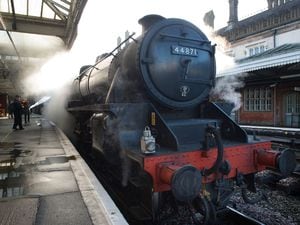Uncovered: Scaffolding removed from Shrewsbury Flaxmill as phase two of refurb nears end
The 222-year-old bricks of Shrewsbury’s Flaxmill Maltings are slowly being uncovered as scaffolding is taken down piece by piece.
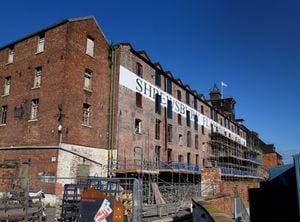
A large section of the historic building is now visible to the public for the first time since the scaffolding started to go up in 2014.
As phase two of the major project draws to a close, the metals bars are being removed from the building and new signage is being painted on the exterior.
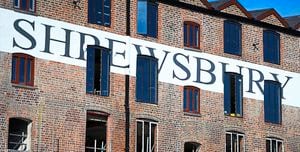
Chairman of Friends of the Flaxmill Maltings, Alan Mosley, said: “It is wonderful to see a difference being made.
“This work is preparing the building for its new life and for the next 100 years.
“During this latest stage, the brick work has been strengthened, the old windows have been opened up and new windows have been put in.
See also:
“People can now start to see the Flaxmill as the plastic roof has come off and the scaffolding is coming down. It looks great.”
This phase is nearly complete and Alan revealed a new contractor will begin the next section in the new year. Further work will be carried out in the main building as well as work in the Grade II-listed kiln.
Earlier this month the scheme took a major step forward when the plastic roof was removed and replaced with a permanent fixture.
More than 15,000 Welsh slate tiles and specially commissioned cast-iron gutters have been used to replace the roof of the Main Mill.
Meanwhile, inside the Grade I-listed building, the second floor has undergone a major transformation.
Time-lapse footage shows the internal scaffolding being removed to let the light flood in once more.
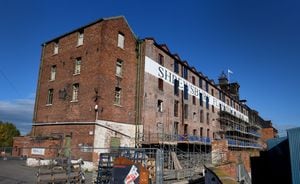
During the Industrial Revolution, the spinning mill became Shrewsbury’s largest employer with more than 800 men, women and children working there manufacturing linen thread from flax.
After it closed in 1886 it reopened to produce malt for the brewing industry.
Part of the building served as a barracks for soldiers during the Second World War and finally closed as a maltings in 1987.


